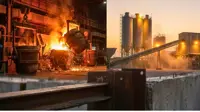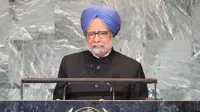Aero India 2025 150 companies land in Bengaluru looking for billion dollar opportunities
12 Feb 2025
.webp)
Aero India 2025 kicked off at Bengaluru’s Yelahanka Air Force Station on Monday with an impressive list of participants that included 900 exhibitors and 150 companies from 90 countries participating in the 5-day event.
The 15th edition of the bi-annual event (10-14 February), with the theme ‘The Runway to a Billion Opportunities,’ is spread over an area of over 42,000 sq metres and is perhaps the biggest-ever air show in India.
As defence minister Rajnath Singh pointed out in his inaugural address, there is wider interest in the event with defence ministers or representatives from about 30 countries and air force chiefs or defence secretaries of 43 countries attending the event.
Aero India 2025, with critical and frontier technologies on display, offers a platform to further strengthen relations among like-minded countries and benefit from partnerships, Rajnath Singh said.
But, he said, more than facilitating transactions, Aero India 2025 helps nations and industries to forge partnerships for co-development and co-production of critical products.
With record 2025-26 Budget allocation of Rs6,81,000 crore ($78.48 billion), which includes Rs1,80,000 crore ($20.74 billion) for capital acquisition, the ministry of defence is ready to engage partners for modernisation of India’s defences, he said.
He said the government promotes private participation in India’s defence production and has therefore adopted a collaborative approach to strengthen the defence sector. He cited the example of the joint venture between Tata Advanced Systems Limited and Airbus for the production of C-295 transport aircraft in Gujarat.
He said India today is a globally preferred destination for aerospace components and complex system assembly and that both private and public sector industries are facilitating this transformation.
Fifth-generation aircraft
The highlight of the show is the participation of two leading fifth-generation fighter jets - Russian Su-57 and the American F-35 Lightning II considered the most advanced fifth-generation fighter.
But the US is unlikely to put forward any acceptable proposal with the Lockheed Martin F-35 Lightning II.
India, which is trying to bridge a 15-year gap in manufacturing and deploying state-of-the-art fighter aircraft, is looking for a fifth-generation machine, while rival China has unveiled its sixth-generation fighter.
Besides, Russia has showcased its killer drones as well as the Lancet-E loitering munition system for the first time at an international aerospace exhibition.
Product 52-E guided munition carrier, along with Product 51-E and the Z-16-E reconnaissance drone, together form the Lancet-E system, according to Russian state media reports.
Russia’s state arms exporter, Rosoboronexport, has displayed an export version of the Lancet series effectively used by Russian forces to destroy nearly 45 per cent of NATO-supplied artillery systems with Ukraine.
The Lancet, deployed alongside the ZALA reconnaissance drones makes it a formidable weapon that can destroy anything on the battlefield.
The agency is open to both large-scale exports and licenced production of the system, which makes the munition a strong contender in the global market. munitions.
Russia is represented by more than ten of its largest defence firms, collectively showcasing over 500 military products at Aero India 2025.
Also on display is the model airframe of India's own fifth-generation stealth fighter jet, called the Advanced Medium Combat Aircraft (AMCA), which is facing hiccups as the government is yet to make a decision on sourcing the engine.
The AMCA, reportedly, will be a single-seater, twin-engine fifth-generation fighter jet.
HAL will be taking up the development of AMCA, after the full scale development of LCA Tejas Mark 2. Serial production of AMCA is expected to begin by 2035, say reports.
HAL is also building an unmanned aerial combat platform, called CATS (Combat Air Teaming System), developed in partnership with NewSpace Research and Technologies (NRT).
Besides, India’s indigenous aircraft Tejas and locally built helicopters and drones and a number of high-tech products such as Astra Missile, New Generation Akash missile, autonomous underwater vehicle, unmanned surface vessel, Pinaka guided rocket, all of which are being manufactured within the country, are also on display.
Ahead of the mega Aero India 2025 event, Sweden’s Saab renewed its pitch to sell Gripen fighter jets to the Indian Air Force, which is looking to add 114 medum role fighter aircraft to its dwindling fleet.
Saab is offering the Gripen-E, which, it said,can be delivered in three years. Besides, Gripen India claims that the aircraft can align seamlessly with India’s defence needs, offering advanced weapons, cutting-edge sensors, countermeasures systems, and pilot-friendly flight control mechanisms.
It is also offering technology transfer and product localisation as part of a deal.
Meanwhile, Saab has announced that its upcoming plant in Jhajjar, Haryana, will begin production of the Carl-Gustaf shoulder-fired weapon by early next year.
Making a pitch for local production
Rajnath Singh said India’s defence production is expected to surpass Rs1,27,000 crore, with exports to the tune of Rs21,000 crore in the current fiscal. Defence production in the coming fiscal (2025-26) is expected to reach Rs1,60,000 crore, with exports surpassing Rs30,000 crore, he added.
Addressing the participant companies and representatives at the inaugural function, the minister said the year 2025 will see a lot of reforms in the defence sector, even as he sought suggestions from stakeholders.






















